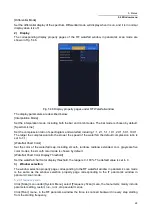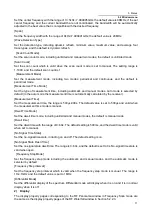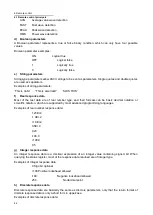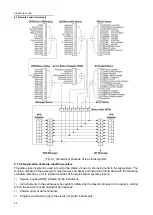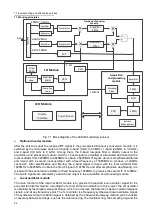
6 Remote control
6.1 Remote control principals
83
PERiodic
measurement mode is periodic
CONTinuous
measurement mode is continuous
i)
Digital Boolean response data
A binary value 1 or 0 is returned as Boolean response data.
j)
String response data
String response data and string parameters are alike. The main difference is that the separators of string
response data are double quotes instead of single quotes. Double quotes can also be embedded in
string response data, and there may be no characters between the double quotes. Here are some
examples of string response data:
―This is a string‖
―one double quote inside brackets: (―‖)‖
6) Number system of commands
The value of the command can be entered in binary, decimal, hexadecimal or octal format. When using
binary, hexadecimal or octal format, a proper identifier is required before the value. The decimal format
(the default format) does not require an identifier. When a value is entered without an identifier in front of
it, the device will ensure it to be in decimal format. The following list shows the identifiers required for
different formats:
#B indicates that the number is a binary value;
#H indicates that the number is a hexadecimal value;
#Q indicates that the number is an octal number.
The following are the various presentations of the decimal number 45 in the SCPI command:
#B101101
#H2D
#Q55
The following example uses the hexadecimal value 000A to set the squelch level threshold to 10 dBuV.
OUTP:SQU:THR #H000A
When using a non-decimal format, a measurement unit, such as dBuV or dBm, is not used along with
the value.
7) Command line structure
A command line may contain more than one SCPI command. To indicate the end of the current
command line, the following method may be used:
Enter;
Enter with EOI;
EOI with the last data byte.
Commands in the command line are separated by semicolons, and commands belonging to different
subsystems start with a colon. For example:
MMEM:COPY "Test1", "MeasurementXY";:HCOP:ITEM ALL
This command line contains two commands, the first command belongs to the MMEM subsystem and
the second command belongs to the HCOP subsystem. If the adjacent commands belong to the same
subsystem, the command paths are partially repeated and the commands can be abbreviated. For
example:
HCOP:ITEM ALL;:HCOP:IMM
This command line contains two commands, both of which belong to the HCOP subsystem and have the
same level. So the second command can start from the lower level of HCOP and can omit the colon at

